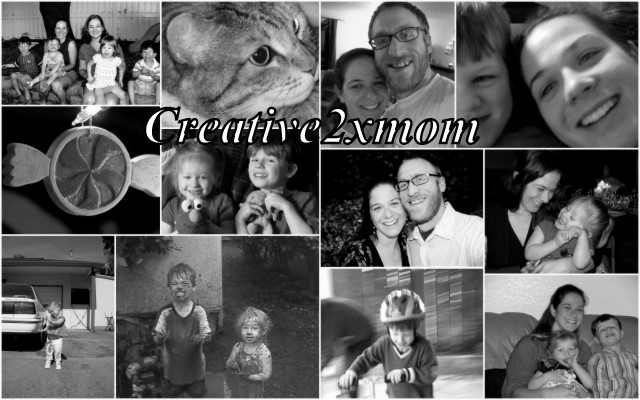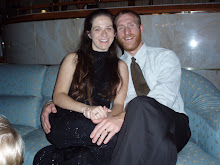*Art Supplies-- We love chalk pastels. I never knew how much we would enjoy them till we gave them a try. Our favorite lessons come from Chalkpastel.com But maybe you want to try water colors... or maybe your kids go through crayons by the box. Find a medium you're excited about.
Atlas--great for geography study. We started using one more in middle school for our history studies. You can hold off on an atlas, but in time, you will want to have one.
Backpacks/ Book bags-- perfect for field trips or co-op. Ours also get used for travel schooling, hikes, visiting family in the hospital, camping, and more.
*Beads, erasers, math manipulatives--Dollar spot erasers at Target can mix up the seasons. I especially use these if I have kiddos from K-4th grades.
*Bible, concordance, Bible atlas-- all three are excellent for Bible study. It's nice for everyone to have their own Bible. But in the younger years, the concordance and atlas are mostly for my own preparation. But around the middle school years, it's nice for your students to have access to these as well.
Binders-- We use ours for keeping loose worksheets and math pages together. They're also great for creating art collections or morning binders. But if you don't do a lot of paperwork, these may not be necessary.
*Bookshelves-- we never have enough. Yeah, these are definitely a necessity.
Calculator-- I allow my kids to use them around 5th grade, but my younger kids love just playing with numbers.
*Clipboards-- great for travel, parks, or homeschooling around the house. Clipboards are a nice surface for getting outdoors, or taking notes on the run. I pick up several at the Dollar Tree.
Construction paper-- great for pockets, art, etc. We use it for history and literature books, and creating our own books. It's also great for our chalk pastel paintings.
Crafting supplies-- beads, poster paint, etc. There's really never enough crafting supplies. Incorporating art in to book projects, history projects, and science experiments is a great way to break up the day and show learning in a new way.
*Crayons/ Colored Pencils-- My kids have grown past the crayon stage, but they love colored pencils. But having some sort of coloring instrument is great for posters, reports, or comic books.
*Dictionary-- my kids use them all the time. We've invested in several over the years including Children's Dictionaries and a couple of really heavy duty extensive dictionaries.
Drawing paper-- great for sketching. My youngest processes through drawing and I find pages of science notes, comic books about stories he's read, and silly stories about historical figures. Having free drawing paper is a huge asset.
Dry-erase board and markers-- Dollar tree has personal size boards for spelling, math practice, and more! Writing with a marker is a nice break from always working out math problems on scratch paper.
Flash cards-- sight words, trivia cards, math functions, etc. I find a lot of our flash cards at Dollar Tree, but you can make your own as well. They have some great trivia cards in the style of Professor Noggins in all types of subjects.
Games-- we have an extensive game collection and love it! Besides books, this is where I blow my budget. Gift educational games for birthdays, holidays, and Back to School. Also be on the lookout of those trivia cards or make your own.
Globes and maps--great for literature and geography. I think having a firm grasp on geography is great for placing events in history and literature.
*Glue sticks--needed for projects, reports, etc. Trust me, your kids will use them a lot, especially in the younger years.
Graph paper-- very needed in middle school, but also good for handwriting, and aligning math practice. Graphing equations will become necessary in those upper elementary/ middle school years. But graph paper is great for putting numbers in columns for all types of mathematical operations.
*Handwriting charts-- Handwriting books are great, but if you can't get one, look for a handwriting border (again, find them at the Dollar Tree). Having that handwriting example is a great visual for learning to form letters. We still keep our cursive chart in our learning space.
Highlighters-- Even if you chose not to highlight in your books (we don't), highlighters are great for notes and studying... especially in the later years.
Index cards-- We keep index cards in the house for studying and Scripture memory. As my kids have grown into the middle school and high school years, I've learned how invaluable index cards really are.
Journal or composition notebook-- This is another supply that we've started using more recently. Some homeschoolers will start journaling at a young age and we did like the primary composition notebooks for Pre-K and Kindergarten. Somehow we got away from them until recently. Now we love making our own common place books and including passages that speak to us.
Lesson planner-- My lesson planner really is my brain. I use it to not only keep up on track in our core subjects, but also to schedule some of those small subjects like geography and daily reading. Using a lesson plan gives me a space to organize around appointments and plan special events like teatime or holiday parties.
Markers-- Markers are so much fun for drawing book or movie posters, creating brochures, coloring Story of the World pages, or just enjoying during free time. My kids typically go through a marker phase between grades 2-5 and we just can't get enough of them.
Notebook paper-- Some people like notebooks. I like having loose leaf notebook paper for filling binders. Then we can add, subtract, or arrange pages and assignments as needed. I especially stock up on notebook paper for our math curriculum. Starting in third grade, my kiddos transfer their math problems to lined paper and we have a specific binder just for math.
Outdoor sports equipment-- This one is probably something you already have around the house... jump ropes, kickballs, hula hoops... any kind of outdoor sports equipment to help your kids get their wiggles out and develop their gross motor skills.
Paints/ brushes-- Again, we try to incorporate art across subjects so the kids will often create posters for books, historical events, lab reports, etc. They also like making menus and advertisements for playing restaurant, dr's office, theater, etc which is all learning.
*Pencil boxes-- Pencil boxes are great for keeping track of everyone's pencils and erasers, as well as more specialty type items like compasses, protractors, and scientific calculators. My kids also keep timers in there for keeping track of online learning and reading. Plus, they're easy to grab off the shelf and toss in a backpack for nature hikes, the park, the library, etc.
*Pencils & Pencil Sharpener-- Yep, we need pencils, but make sure you splurge on the Ticonderoga ones. In this case, name brand does make a HUGE difference. And invest in an electric pencil sharpener as soon as possible. It will save you from all the little pencil shaving mess.
Post-its-- This one might be more for me than the kids. I keep notes everywhere: in my planner, in books I'm reading with the kids, in their school books. This helps me keep track of my thoughts when I need to purchase items for our homeschool, or have a special discussion question I want to remember.
*Scissors-- A small pair of scissors is great for school projects and can easily be tucked into each child's pencil box. Then we're not all fighting to use the same pair of family scissors at once.
Stapler & staples-- I used to try to get by on the dollar store stapler, but found after awhile it just wasn't worth it. A nice desk stapler is great for keeping sample paper work together, keeping reports together with projects, and returning items for all the kids' activities. It's saved me a ton of time looking for things.
Thesaurus-- A thesaurus is especially useful from the middle school years on. When my kids get tired of using the same word over and over, and are developing their writing, it's nice to have a thesaurus handy to expand their vocabulary.
Three hole punch-- This one is great for keeping any handouts, workbook pages, or pictures organized in the kid's binders.
Timeline charts/books-- This year, we're each keeping our own Book of Centuries which is like a timeline notebook. I've been wanting to try these for a few years and this fall we made a basic notebook version to help us organize our thoughts. I definitely wish I'd tried them sooner.
Wrap-ups-- These are a great hands-on way to practice basic math facts from addition to division. They even have a states and capitals version. Bonus: they don't require mom to be available for practice and they're self-correcting.
And if all else fails, stock up on pencils, paper, and a library card. It's amazing what you and your kiddos can learn just by taking a weekly library trip. I firmly believe so much can be learned with just a few simple tools and a thirsty mind.
Whether you're a new homeschooler this year or a veteran of 20 years, what homeschool supply can you absolutely not live without? Leave us a comment below and let's share together.








No comments:
Post a Comment